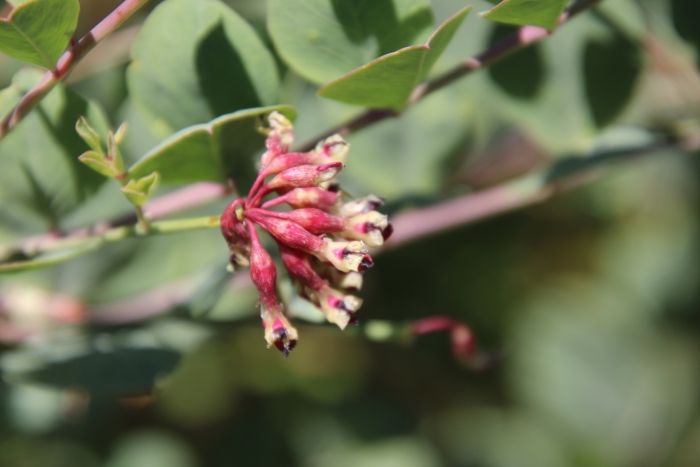Big Deervetch
(Hosackia crassifolia)
Big Deervetch (Hosackia crassifolia)
/
/

Millie Basden
CC BY 4.0
Image By:
Millie Basden
Recorded By:
Copyright:
CC BY 4.0
Copyright Notice:
Photo by: Millie Basden | License Type: CC BY 4.0 | License URL: http://creativecommons.org/licenses/by/4.0/ | Rights Holder: Millie Basden | Publisher: iNaturalist | Date Created: 2019-06-20T12:05:43-07:00 |

























































Estimated Native Range
Summary
Hosackia crassifolia, commonly known as Big Deervetch, is a semi-deciduous perennial herb that is native to a variety of habitats, including open woodlands, forest edges, and chaparral regions in the Pacific Northwest, particularly in California and Oregon. It typically grows to a height of 2-4 feet (0.6-1.2 meters) and a width of 3-4 feet (0.9-1.2 meters), with a somewhat bushy habit and long straight stems. The leaves are oval-shaped and evenly spaced along the stems. Big Deervetch produces dense clusters of pea-like flowers that can be yellow, pink-and-yellow, or scarlet-and-yellow, which are quite showy and bloom in the spring through summer, and sometimes into fall.
This plant is valued for its vibrant flowers and ability to attract pollinators such as bees and butterflies. It is used in native plant gardens, as a border plant, and for habitat restoration projects. Big Deervetch is adaptable to various soil types, provided they have medium drainage, and it thrives in full sun to part shade. While it requires medium amounts of water, established plants have some drought tolerance. It is not commonly affected by serious pests or diseases, but overwatering can lead to root rot.CC BY-SA 4.0
This plant is valued for its vibrant flowers and ability to attract pollinators such as bees and butterflies. It is used in native plant gardens, as a border plant, and for habitat restoration projects. Big Deervetch is adaptable to various soil types, provided they have medium drainage, and it thrives in full sun to part shade. While it requires medium amounts of water, established plants have some drought tolerance. It is not commonly affected by serious pests or diseases, but overwatering can lead to root rot.CC BY-SA 4.0
Plant Description
- Plant Type: Herb
- Height: 2-4 feet
- Width: 3-4 feet
- Growth Rate: Moderate
- Flower Color: Yellow, Pink
- Flowering Season: Spring, Fall, Summer
- Leaf Retention: Semi-Deciduous
Growth Requirements
- Sun: Full Sun, Part Shade
- Water: Medium
- Drainage: Medium, Fast
Common Uses
Bird Garden, Butterfly Garden, Hummingbird Garden, Low Maintenance
Natural Habitat
Native to open woodlands, forest edges, and chaparral regions in the Pacific Northwest
Other Names
Common Names:
Scientific Names: , Hosackia crassifolia, Lotus crassifolius, Hosackia platycarpa, Hosackia stolonifera var. pubescens, Drepanolobus crassifolius, Hosackia stolonifera,
GBIF Accepted Name: Hosackia crassifolia Benth.